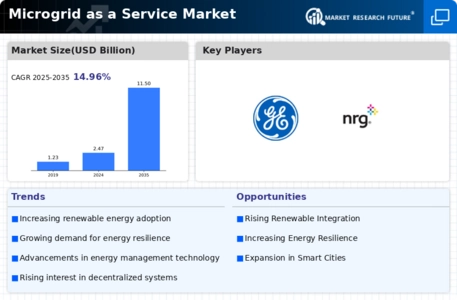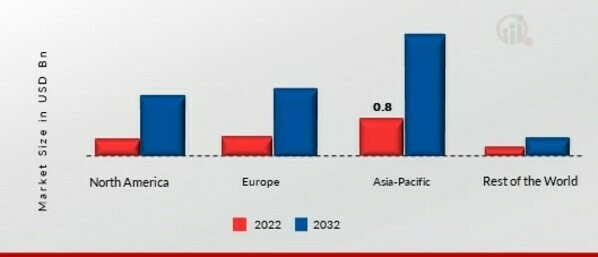Market Growth Projections
The Global Microgrid as a Service Market Industry is poised for substantial growth in the coming years. Projections indicate that the market will reach 2.47 USD Billion in 2024 and is expected to expand to 11.5 USD Billion by 2035. This growth trajectory reflects a compound annual growth rate (CAGR) of 14.98% from 2025 to 2035. Such figures underscore the increasing adoption of microgrid solutions across various sectors, driven by the need for energy resilience, sustainability, and technological advancements. The market's expansion is indicative of a broader shift towards decentralized energy systems that prioritize local generation and consumption.
Growing Demand for Renewable Energy
The Global Microgrid as a Service Market Industry is witnessing a surge in demand for renewable energy solutions. This trend is driven by the increasing need for sustainable energy sources to combat climate change. Governments worldwide are implementing policies that promote the adoption of renewable energy technologies, which are often integrated into microgrid systems. For instance, countries like Germany and Denmark have made significant investments in wind and solar energy, contributing to the growth of microgrid services. As a result, the market is projected to reach 2.47 USD Billion in 2024, reflecting a strong shift towards cleaner energy alternatives.
Increased Focus on Energy Resilience
The Global Microgrid as a Service Market Industry is increasingly influenced by the growing emphasis on energy resilience. As natural disasters and extreme weather events become more frequent, communities are seeking reliable energy solutions that can withstand disruptions. Microgrids offer localized energy generation and distribution, enhancing the resilience of energy systems. For example, regions prone to hurricanes are investing in microgrid technologies to ensure continuous power supply during outages. This focus on resilience is driving demand for microgrid services, as stakeholders recognize the importance of maintaining energy access in challenging conditions.
Government Initiatives and Incentives
Government initiatives and incentives are crucial drivers for the Global Microgrid as a Service Market Industry. Many countries are offering financial support, tax incentives, and grants to encourage the development and deployment of microgrid systems. For instance, the United States has introduced various programs aimed at promoting energy resilience and sustainability through microgrid projects. Such initiatives not only lower the financial barriers for implementation but also stimulate private sector investment in microgrid technologies. This supportive regulatory environment is likely to contribute to a robust market growth trajectory, with a projected CAGR of 14.98% from 2025 to 2035.
Rising Urbanization and Electrification Needs
Urbanization and the corresponding rise in electrification needs are significant factors propelling the Global Microgrid as a Service Market Industry. As cities expand, the demand for reliable and efficient energy solutions intensifies. Microgrids can effectively address the energy needs of urban areas by providing localized generation and reducing transmission losses. Moreover, developing regions are increasingly adopting microgrid technologies to enhance energy access in underserved communities. This trend is expected to contribute to the market's growth, as urban centers seek innovative solutions to meet their energy demands sustainably.
Technological Advancements in Microgrid Solutions
Technological innovations play a pivotal role in the expansion of the Global Microgrid as a Service Market Industry. Advancements in energy storage systems, smart grid technologies, and IoT integration enhance the efficiency and reliability of microgrid operations. For example, the development of advanced battery storage solutions allows for better energy management and utilization. These technologies not only improve operational performance but also reduce costs, making microgrid services more appealing to consumers. As these innovations continue to evolve, they are expected to drive market growth significantly, with projections indicating a market size of 11.5 USD Billion by 2035.




